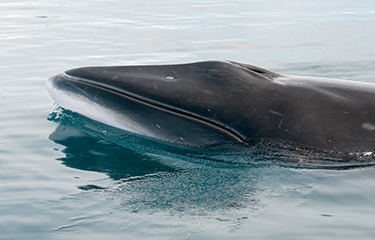Japan’s whaling season began on 3 April. This is the third year Japan has allowed commercial whaling within its own exclusive economic zone (EEZ) since withdrawing from the International Convention for the Regulation of Whaling (ICRW).
Previously, Japan had conducted whaling in Antarctic and North Pacific waters under an exception for scientific research allowed by ICRW rules. But as the meat was sold in Japan, this was heavily criticized by anti-whaling nations as mere cover for commercial whaling.
The program suffered two important setbacks prior to Japans withdrawal and its termination of whaling in international waters. A case brought in the International Court of Justice (ICJ) in 2010 by Australia (with New Zealand intervening) challenged the legitimacy of Japan’s scientific whaling. The case was decided against Japan in 2014. The ICJ determined that the scale of Japan’s “JARPA II” scientific program was not appropriate for the scientific purpose and that no permits could be issued under the program. Japan responded with a new program titled “NEWREP-A” and declined to refer any further disputes on the whaling to the court.
In 2018, the Standing Committee to the Convention on International Trade in Endangered Species of Wild Fauna and Flora (CITES - also known as the Washington Convention) determined that Japan’s importation of meat from endangered sei whales was illegal under the treaty. Sei whales are listed on Appendix I of the Convention, which means that international commercial trade in their products is banned. Japan mostly hunted sei whales on the high seas beyond its national jurisdiction. The committee ruled that bringing these products into Japan was considered international trade and therefore banned.
Whaling catch quotas for 2021 released by the Japan’s fisheries agency are 120 minke whales, to be caught from coastal bases, as well as 150 Bryde’s whales and 25 sei whales, to be taken by factory ship. The “catch limit” based on scientific data is actually higher, but the government has allotted 37 minke whales for possible bycatch (net entanglement), and has reserved some additional quota.
Ishinomaki City-based Ayukawa Hogei K.K., which supplies whale meat, offers it in the form of bacon – meaning blubber with some meat attached – or red meat. Minke whale bacon slices are advertised on the company’s website at JPY 500 (USD 4.55, EUR 3.83) for 60 grams; fin whale bacon at the same price for 80 grams; breaded whale meat for deep frying at JPY 521 (USD 4.75, EUR 3.99) for 180 grams; and sei whale red meat at JPY 600 (USD 5.47, EUR 4.59) for 190 grams.
Two boats belonging to Ayukawa Hogei departed from Ishinomaki, Miyagi Prefecture to start the whaling season on 3 April. Two other vessels belonging to other companies will depart from Hachinohe in Aomori Prefecture. A fifth vessel is based out of Abashiri, on Hokkaido’s Okhotsk Sea coast. Current whaling will be undertaken near the coast, while whaling in offshore waters is scheduled to start around June.
Japan, Norway, and Iceland are currently the only countries to allow commercial whaling, though Iceland’s two whaling companies suspended their hunts this year under the influence of COVID-19 and may not resume them.
Canada, the Faroes, Greenland, Indonesia, Saint Vincent and the Grenadines, and the U.S. all allow whale hunting under exceptions for aboriginal subsistence. South Korea occasionally takes whales as fishing bycatch and allows their sale.
Photo courtesy of Graeme Snow/Shutterstock







